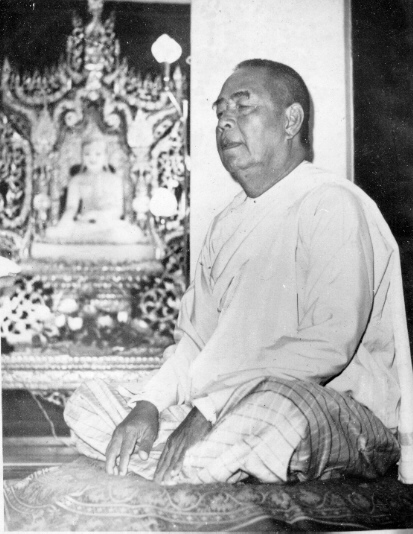Vipassana Meditation
Sayagyi U Ba Khin
Impermanence (anicca) is the essential factor which must be experienced first and understood by practice. A mere reading of books on Buddhism or a book-knowledge of the Buddha-Dhamma will not be enough for the understanding of true anicca because the experiential aspect will be missing. It is only through experience and understanding of the nature of change (anicca) as an ever-changing process within your very self that you can understand change in the way the Buddha would have you understand it. This understanding of anicca can be developed as it was in the days of the Buddha by persons who have no book-knowledge whatsoever of Buddhism.
Today, with the world facing serious problems, many of which threaten mankind, the time is ripe for everyone to take to Vipassana meditation and learn how to find a deep pool of quiet in the midst of all that is happening. Impermanence is inside everyone. It is within the reach of everyone. Feel anicca, impermanence, experience anicca, become engrossed in the awareness of impermanence, anicca, and it will be possible to cut away from the world of ideation outside. Anicca will be the gem of life which you will treasure to create a reservoir of calm and balanced energy for your own well-being and for the welfare of society.
When the awareness of impermanence, anicca is properly developed, it strikes at the root of your physical and mental ills and gradually removes whatever is bad in you—the sources of your physical and mental ills.
There is no special technique for activating the awareness of impermanence, anicca other than the use of the mind set to a perfect state of balance and attention projected to the object of meditation. In Vipassana the object of meditation is impermanence, anicca. Therefore, if you are used to drawing back your attention to body sensations, you will be able to feel impermanence directly. You should first experience anicca on or in the body in the area where you can easily fix your attention, changing the area of attention from place to place, from head to feet. At times you should probe into the interior. No attention is to be paid to the anatomy of the body. Direct attention is given to the formation of matter, kalapas, and the nature of their constant change.
